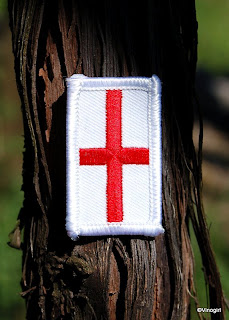 The record low temperatures that were forecast for last week did not materialise. Last night it was supposed to only get down to 36 degrees and it got down to 32 instead...weathermen!!!
The record low temperatures that were forecast for last week did not materialise. Last night it was supposed to only get down to 36 degrees and it got down to 32 instead...weathermen!!!I took this picture several weeks ago, around the time I did my smudge pot post. I imagined that Napa was going to be in for a frosty April but no, it has just been cool and damp all month long. Of course, the scarcity of freezing overnight temperatures has been great for the vines, thank goodness.
Besides fans, the other primary method of frost protection in Napa vineyards is the utilisation of overhead sprinkler systems, designed to apply .11 inches of water per hour. Overhead sprinklers require upwards of 50 gallons of water per minute per acre: at this rate full protection of the vineyard to temperatures down into the mid-20s can be achieved. These systems derive their effectiveness from the latent heat of fusion which is given up as the water turns to ice on the vine. The mixture of ice and water maintains the bud at 32 degrees, just one critical degree above the point where bud damage begins. The sprinklers then continue until well after sunrise and subsequently the ice melts. This is a rather expensive method of frost protection and an adequate source of water is essential. Sprinklers are however very quiet unlike the wind fans, and very clean unlike the smudge pots. The sprinklers can also be used at other times in the growing season for irrigation, heat suppression, and pest management. This year I am sure the sprinklers will be employed in the certain pesticide-death of the European Grapevine Moth.
Sprinkle liberally with water, add a dash of physics and you have the recipe for a successful harvest in the autumn.













